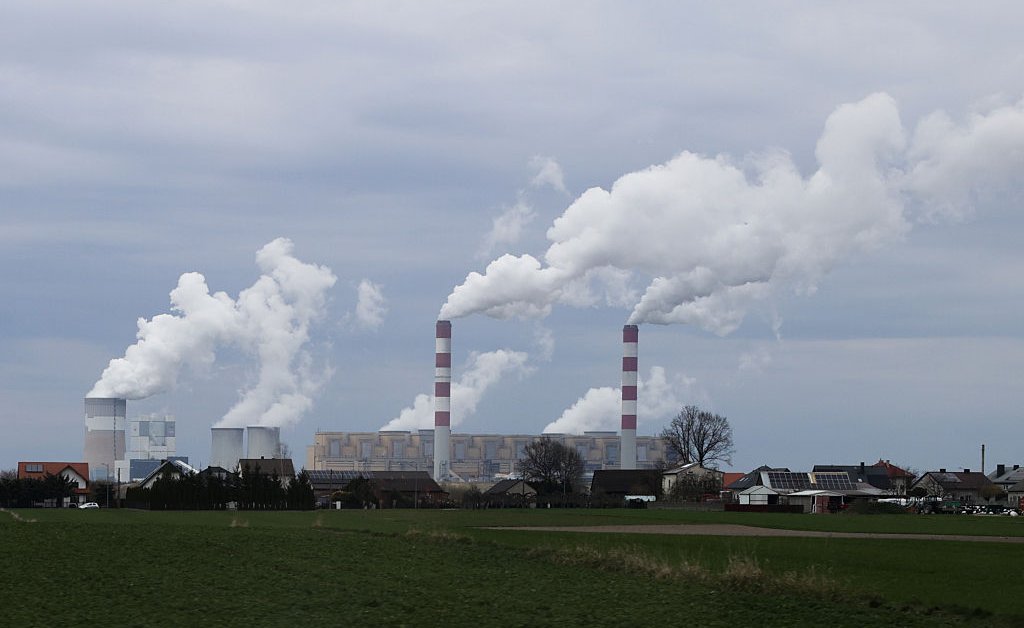Air Pollution's Deadly Toll: How Cutting Emissions Saves Lives

Welcome to your ultimate source for breaking news, trending updates, and in-depth stories from around the world. Whether it's politics, technology, entertainment, sports, or lifestyle, we bring you real-time updates that keep you informed and ahead of the curve.
Our team works tirelessly to ensure you never miss a moment. From the latest developments in global events to the most talked-about topics on social media, our news platform is designed to deliver accurate and timely information, all in one place.
Stay in the know and join thousands of readers who trust us for reliable, up-to-date content. Explore our expertly curated articles and dive deeper into the stories that matter to you. Visit Best Website now and be part of the conversation. Don't miss out on the headlines that shape our world!
Table of Contents
Air Pollution's Deadly Toll: How Cutting Emissions Saves Lives
Air pollution is a silent killer, claiming millions of lives annually. Far from a distant environmental concern, its impact is immediate and devastating, affecting respiratory health, cardiovascular systems, and overall life expectancy. But the grim statistics also offer a powerful message: reducing emissions isn't just about protecting the planet; it's about saving lives.
The Shocking Numbers Behind Air Pollution's Deadly Grip
The World Health Organization (WHO) estimates that air pollution contributes to over 7 million premature deaths globally each year. This isn't some abstract figure; these are individuals lost to diseases directly linked to breathing contaminated air. These deaths are largely preventable. The most vulnerable populations – children, the elderly, and those with pre-existing respiratory conditions – bear the brunt of this invisible threat.
Understanding the Deadly Link Between Pollution and Health
The harmful effects of air pollution are multifaceted. Exposure to pollutants like particulate matter (PM2.5), ozone, and nitrogen dioxide leads to:
- Respiratory illnesses: Asthma, bronchitis, and pneumonia are exacerbated by poor air quality, leading to hospitalizations and even fatalities.
- Cardiovascular diseases: Air pollution increases the risk of heart attacks, strokes, and other cardiovascular problems. The pollutants inflame blood vessels and contribute to the formation of blood clots.
- Cancer: Long-term exposure to certain air pollutants is linked to an increased risk of lung cancer and other cancers.
- Reduced lung function: Even seemingly healthy individuals experience a decline in lung function with prolonged exposure to polluted air.
The Path to Cleaner Air and Longer Lives: Emission Reduction Strategies
The solution is clear: drastically reducing emissions of harmful pollutants. This requires a multifaceted approach involving:
- Transitioning to renewable energy: Shifting away from fossil fuels and embracing solar, wind, and other renewable energy sources is crucial in reducing air pollution from power generation. Learn more about the benefits of renewable energy [link to a reputable source on renewable energy].
- Improving vehicle emissions standards: Stricter regulations on vehicle emissions, coupled with promoting electric vehicles and public transportation, can significantly improve air quality in urban areas. Check out the latest advancements in electric vehicle technology [link to a reputable source on EV technology].
- Investing in green infrastructure: Planting trees, creating green spaces, and implementing other green infrastructure projects can help filter pollutants from the air. Explore the impact of urban greening on air quality [link to a reputable source on urban greening].
- Promoting cleaner industrial practices: Industries need to adopt cleaner technologies and stricter emission control measures to minimize their environmental footprint. Discover sustainable industrial practices [link to a reputable source on sustainable industrial practices].
- Encouraging sustainable transportation: Promoting cycling, walking, and public transportation reduces reliance on private vehicles, leading to cleaner air.
Conclusion: A Collective Responsibility for a Healthier Future
The connection between air pollution and premature deaths is undeniable. The good news is that we possess the knowledge and technology to mitigate this crisis. By implementing comprehensive emission reduction strategies, we can not only protect the environment but also dramatically improve public health and save countless lives. This requires a collective effort from governments, industries, and individuals alike. The time for action is now – let's breathe easier, together.

Thank you for visiting our website, your trusted source for the latest updates and in-depth coverage on Air Pollution's Deadly Toll: How Cutting Emissions Saves Lives. We're committed to keeping you informed with timely and accurate information to meet your curiosity and needs.
If you have any questions, suggestions, or feedback, we'd love to hear from you. Your insights are valuable to us and help us improve to serve you better. Feel free to reach out through our contact page.
Don't forget to bookmark our website and check back regularly for the latest headlines and trending topics. See you next time, and thank you for being part of our growing community!
Featured Posts
-
 Live Updates Significant Testimony In The Karen Read Murder Retrial
May 08, 2025
Live Updates Significant Testimony In The Karen Read Murder Retrial
May 08, 2025 -
 Expert Witness Links Hypothermia Search To O Keefe Death Investigation
May 08, 2025
Expert Witness Links Hypothermia Search To O Keefe Death Investigation
May 08, 2025 -
 Rome Masters Badosa Vs Osaka Preview Head To Head Betting Tips And More
May 08, 2025
Rome Masters Badosa Vs Osaka Preview Head To Head Betting Tips And More
May 08, 2025 -
 Coinbases 2 9 Billion Deribit Acquisition Wsj Report Details The Deal
May 08, 2025
Coinbases 2 9 Billion Deribit Acquisition Wsj Report Details The Deal
May 08, 2025 -
 Prosecutors Use Cell Phone Evidence To Counter Karen Reads Alibi In Murder Trial
May 08, 2025
Prosecutors Use Cell Phone Evidence To Counter Karen Reads Alibi In Murder Trial
May 08, 2025
